Matador Network's Blog, page 566
November 4, 2021
The best early Black Friday camera deals you can get right now

Black Friday seems to come earlier and earlier every year. And say what you will about seasonal creep, the deals can be a boon for travelers looking to save on the gear and equipment they love. That’s especially true when it comes to what’s available in the photo and video department.
Amazon has early Black Friday deals for a range of popular cameras, lenses, and equipment with discounts in the double digits. Jump on these now and, in many cases, your Black Friday deal will be in your hands before the actual Black Friday even rolls around.
We hope you love the products we recommend! Just so you know, Matador may collect a small commission from the links on this page if you decide to make a purchase. Listed prices are accurate as of the time of publication.
Canon Black Friday camera and lens deals on Amazon
Photo: Canon
A suite of lenses, camera bodies, and accessories from Canon are up to 23 percent off the regular Amazon listing price. The camera option is limited to the Canon EOS R Mirrorless (10 percent off down to $1,899 when you buy the kit, or 11 percent off down to $1,599 for just the body). This is, however, a good opportunity to stock up on lenses. An all-purpose 35mm is the best deal you can find here: 20 percent off to bring the price down to $399, though there are some sub-$200 lenses as well like the 24mm lens ($129) and 22mm wide angle ($199).
Sony Black Friday camera and lens deals on AmazonThe ever-popular Sony Alpha A6600 mirrorless is on sale, making now a great time for anyone on the fence about the already affordable and reliable camera. The body alone costs $1,198 (14 percent off), while the kit with a zoom lens costs $1,598 (11 percent off). The deals for Sony cameras also extend to a few compact options that make it easy to shot on-the-go video and photos. The Sony ZV-1 is a great tool when you need to shoot vlog-style video without having to fiddle too much with settings, and is going for $648 (19 percent off). Fifteen Sony lenses are also on sale for 10-to-22 percent off, from the 18-200mm Sony Alpha lens ($798, 11 percent off), to a 35mm ($648, 13 percent off), to high-grade professional lenses like the Sony FE 70-200mm f/2.8 GM OSS ($2,298, 14 percent off).
Nikon Black Friday camera and lens deals on Amazon
Photo: Nikon
Anyone looking to experiment with Nikon’s mirrorless cameras will be pleased to see the Nikon Z6 full frame mirrorless is on sale for just under $1,600 (a 20 percent discount) for the body alone. To fill it out with the right lenses, 16 compatible lenses are up to 18 percent off, including a 35mm wide angle ($697, 18 percent discount), a 50mm ($496, 17 percent discount), and a 24-70mm standard zoom lens ($1,996, 13 percent discount).
Panasonic Black Friday camera and lens deals on Amazon
Photo: Panasonic
While there aren’t as many deals for Panasonic cameras and lenses are there are for other brands, there are two solid options. The Panasonic LUMIX S5 Full Frame Mirrorless with a 50mm lens and standard 20-60mm zoom lens is 12 percent off, which brings the price down to $2,397, while the same camera without the 20-60mm lens is 14 percent off at just $2,097.
Leather camera case and half case deals on Amazon
Photo: MegaGear/Facebook
If you’re all set on your camera but need some extra protection before heading out into the world, there are big discounts to be found on a range of classy leather cases for various camera bodies. Leather half cases for the Sony Alpha are down to $17 from $35 (a 51 percent discount), while the leather half case for the Leica D-Lux 7 is just $25 (36 percent off). Full-body cases that also cover a standard lens are available as well for some of the most popular camera models, including cases for the Canon EOS ($26, or 52 percent off) and Nikon D3500 ($22, or 36 percent off). Match the new leather look on your camera with a leather memory card case that’s 20 percent off selling for just $11.
7 artsy jigsaw puzzles under $25 for the travelers who miss museums

The world’s museums have reopened, but not everyone feels confident to head abroad and visit the Louvre, the British Museum, or Amsterdam’s Rijksmuseum just yet. While you have the option to take a virtual museum tour, you might also enjoy stepping away from the screen for once and focus on creating your own masterpiece with a fine art jigsaw puzzle.
There are many fine art jigsaw puzzles out there in a variety of styles — Pop Art, Surrealism, abstract Art Deco, etc. — from artists from all over the world. The best part? It costs less than $25 to recreate some of the world’s most famous works of art at home with your family.
We hope you love the puzzles we recommend! Just so you know, Matador may collect a small commission from the links on this page if you decide to buy a puzzle from this selection. Listed prices are accurate as of the time of publication. See our full Advertiser Disclosure here.
1. John Duncan’s “Saint Bride,” 500-piece fine art jigsaw puzzle, $18.95
Photo: Pomegranate and National Galleries of Scotland/Facebook
John Duncan, leader of the Celtic Revival art movement in Scotland, depicted the legend of the Irish Saint Brigid (known as Bride in Scotland) in painting in 1913. The myth says that Saint Bride was carried by angels above the seas to Bethlehem to attend the birth of Jesus Christ.
The piece is filled with intricate details, such as the richly colored wings of the angels and their robes decorated with scenes from the life of Jesus, a seal bobbing in the waves, and birds following the sacred convoy. You’ll be able to see all the elements that make this artwork so captivating by working on the high-quality 500-piece fine art jigsaw puzzle by Pomegranate. It’s not a difficult puzzle to put together and all the members of the family can help assemble it in a matter of a few days.
Where can I see John Duncan’s “Saint Bride” in real life?“Saint Bride” is on display at the Scottish National Gallery in Edinburgh, Scotland. The Scottish National Gallery is open daily from 10 AM to 5 PM and admission is free.
Address: The Mound, Edinburgh, EH2 2EL, Scotland
2. Frida Kahlo’s “Self-Portrait with Thorn Necklace and Hummingbird,” 1000-piece fine art jigsaw puzzle, $16.95
Photo: Eurographics
Frida Kahlo was a Mexican surrealist painter who lived during the first half of the 20th century. Poor health as a child and a bus accident as a young woman led Kahlo to experience life-long physical and emotional pain, recurrently depicted in her art. Throughout her life, Kahlo painted 55 self-portraits, including “Self-Portrait with Thorn Necklace and Hummingbird” in 1940.
This particular piece illustrates Kahlo’s strength in the face of suffering. It includes vivid colors, organic elements, and animals, as is so often the case with her work. In this self-portrait, the artist is shown with her iconic hairdo and bushy eyebrows, which you’ll be able to see up close as you put together the pieces of this fine art jigsaw puzzle by Eurographics.
Where can I see Frida Kahlo’s “Self-Portrait with Thorn Necklace and Hummingbird” in real life?“Self-Portrait with Thorn Necklace and Hummingbird” is currently on display at the Harry Ransom Center in Austin, Texas. The Harry Ransom Center is open Tuesday to Friday from 10 AM to 5 PM, and Saturday and Sunday from 12 PM to 5 PM. Admission is free.
Address: 300 West 21st Street, Austin, Texas 78712, USA
3. Frederic William Burton’s “The Meeting on the Turret Stairs,” 1000-piece fine art jigsaw puzzle, $22.03
Photo: Eurographics and National Gallery of Ireland
Completed in 1864 by Irish artist Frederic William Burton, “The Meeting on the Turret Stairs” is one of the most famous paintings from Ireland.
The artwork depicts the final secret meeting of a couple whose love is doomed. It’s inspired by a medieval Danish ballad about Hellelil, who is in love with her personal guard Hildebrand despite her family disapproving of the relationship. Eventually, Hildebrand is killed by Hellelil’s brothers. The romantically inclined will love working on the poignant and heart-breaking scene of this fine art jigsaw puzzle by Eurographics.
Where can I see Frederic William Burton’s “The Meeting on the Turret Stairs” in real life?“The Meeting on the Turret Stairs” is on display in room 20 of the National Gallery of Ireland in Dublin, open Thursdays between 11:30 and 12:30 PM and Sundays between 2 and 3 PM. Admission is free.
Address: Merrion Square West, Dublin 2, Ireland
4. Gustav Klimt’s “The Virgin,” 1000-piece fine art jigsaw puzzle, $18.43
Photo: Prague’s National Gallery and Eurographics
While Austrian painter Gustav Klimt is very well known throughout the world for his gold leaf and oil painting “The Kiss,” he has produced many other art works beyond his “Golden Period.” One of them, “The Virgin,” painted in 1913, depicts a young woman sleeping under a colorful and heavily patterned blanket. She seems to be having a sensual dream.
This erotic painting makes for a beautiful, yet difficult, puzzle to assemble — it can take a while to sort out and locate the many patterns, colors, and body parts.
Where can I see Gustav Klimt’s “The Virgin” in real life?“The Virgin” is on display in Prague’s National Gallery.
Address: Staroměstské nám. 12, 110 15 Praha 1, Czech Republic
5. Andy Warhol’s “Marilyn Diptych,” 500-piece fine art jigsaw puzzle, $15.99
Photo: Galison
Painted after the death of Marilyn Monroe in 1962, Andy Warhol’s “Marilyn Diptych” is the artwork that epitomizes the Pop Art movement of the 1950s and 1960s. The original piece consists of two canvases, one colored and one in black and white to show the contrast between the actress as a public and private person. Warhol used a publicity photo for her 1953 film Niagara as the image for his iconic painting.
This 500-jigsaw puzzle by Galison only uses the colored part of the diptych, which doesn’t make it any easier to assemble — the repeating pattern and colors make it tricky. And, of course, because it’s a two-sided puzzle (one side has the repeating pattern, the other is a full-size portrait), you’ll want to pull your hair out in a matter of minutes after you start.
Where can I see Andy Warhol’s “Marilyn Diptych” in real life?Andy Warhol’s “Marilyn Diptych” is on display at the Tate Modern in London, England. The Tate Modern is open Monday to Sunday 10 AM to 6 PM. Admission to access the permanent collection is free.
Address: Bankside, London SE1 9TG, England
6. Frank Lloyd Wright’s “Saguaro Forms and Cactus Flowers,” 1000-piece fine art jigsaw puzzle, $13.10
Photo: Frank Lloyd Wright Store and Arizona Biltmore/Facebook
Frank Lloyd Wright, possibly America’s most famous architect, was also a designer of furniture, lead glass, and other decorative art. In 1927, influenced by the desert landscape and flora of Arizona, where he took residence later in life and set up an architecture school, he designed “Saguaro Forms and Cactus Flowers” for the cover of the Liberty magazine.
Frank Lloyd Wright’s colorful abstract Art Deco design has been the inspiration behind many magnets, ties, journals, mugs, and other merchandise. Our favorite, however, is the 1000-piece puzzle by Galison. It won’t be an easy one to put together, but perseverance and patience will reward you with a stunning art piece.
Where can I see Frank Lloyd Wright’s “Saguaro Forms and Cactus Flowers” in real life?A stained glass rendering of Frank Lloyd Wright’s “Saguaro Forms and Cactus Flowers” is visible in the foyer of the front entry of the grand Arizona Biltmore hotel in Phoenix, Arizona. The hotel’s building was inspired by Frank Lloyd Wright’s architectural vision.
Address: 2400 E Missouri Avenue, Phoenix, Arizona 85016, United States
7. Kenojuak Ashevak’s “Six-Part Harmony,” 500-piece fine art jigsaw puzzle, 18.95
Photo: Pomegranate
Kenojuak Ashevak, from Ikirasaq, on the southern coast of Baffin Island, is one of the most renowned Canadian Inuit artists in the world. Her artwork “Six-Part Harmony,” created in 2011 by stonecut and stencil, depicts six animals in a state of interconnection.
This 500-piece puzzle by Pomegranate is one that can be assembled by the entire family, and it’s a beautiful introduction to the fascinating world of Inuit art. And if you happen to fall in love with Inuit art, Pomegranate also carries a puzzle of the artwork “Colourful Wild Owl” by Ningiukulu Teevee. 
The best Airbnbs in Beijing for every type of traveler

The Great Wall, the charm of traditional hutong housing, an explosive live music scene, and some of the most interesting and wonderful street food in the world, Beijing is a destination for travelers looking for that unique China experience. It’s also home to the Forbidden City, an architectural masterpiece and inevitable bucket list item for many travelers. A place with a distinctive atmosphere, it’s a diverse metropolis and if you’re looking for a more authentic stay check out our selection of the best Beijing Airbnb rentals.
We hope you love the Beijing Airbnb rentals we recommend! Just so you know, Matador may collect a small commission from the links on this page if you decide to book a stay. Listed prices are accurate as of the time of publication. See our full Advertiser Disclosure here.
The best Airbnb in Beijing for solo travelersThe best Airbnb in Beijing for couplesThe best Airbnb in Beijing for familiesThe best Airbnb in Beijing for digital nomadsThe best Airbnb in Beijing for first-timersThe best Airbnb in Beijing for partygoersThe best Airbnb in Beijing for foodiesFor solo travelers: This king room at the Iris House Hotel
Photo: Airbnb

Photo: Airbnb

Photo: Airbnb

Photo: Airbnb
.post-gallery--slider .post-gallery-item-caption {color: #fff;}This is one of the best Beijing Airbnb rentals if you are visiting Bejing alone. Solo travelers will appreciate the hostel-like atmosphere at this boutique hotel in Beijing’s second ring road. The rooms are meticulously clean, modern, and aesthetically minimalist, with views overlooking a peaceful courtyard that guests are welcome to enjoy. It’s a solid bang for your buck if you have high standards but aren’t splitting costs with travel companions, though the shared kitchen and living room also provide plenty of opportunities to link up with others.
Two guests, one bedroom
Price: $87 per night

Photo: Airbnb

Photo: Airbnb

Photo: Airbnb

Photo: Airbnb
Loved-up travelers will fit right in at this Valentine-y loft in Baizi Bay. Beyond draws like the well-equipped kitchen, cozy bed with Antarctic quilt and feather down pillows, and floor-to-ceiling windows that overlook the city from a high vantage point, the apartment comes with a movie-theater-style screen and projector for the ultimate date night experience. When you’re not snuggled up at home, couples might enjoy touring nearby Gaobeidian, a traditional tea house and classical furniture street, and the Happy Valley amusement park, which not only has rides but also themed areas like Atlantis and Shangri-La and a shopping area. For everything else, the area is well-connected via various means of public transport.
Two guests, one bedroom
Price: $80 per night

Photo: Airbnb

Photo: Airbnb

Photo: Airbnb

Photo: Airbnb
This stylish three-bedroom homestay in a central yet residential area of Beijing has to be one of the coolest Airbnbs in the city. With room for nine guests, it’s a great choice for groups or families with older kids. Not only are attractions like the Beijing International Sculpture Park nearby, but guests also have access to anything they might need for an optimally comfortable stay right around the corner, from shops and restaurants to a major metro stop. There’s even parking if you’re planning a family road trip, and a 24-hour concierge for everything else.
Nine guests, three bedrooms
Price: $89 per night

Photo: Airbnb

Photo: Airbnb

Photo: Airbnb

Photo: Airbnb
This is one of the best Beijing Airbnb rentals for digital nomads. The one-bedroom suite in Beijing’s buzziest nightlife district is ideal for work-hard-play-hard types. Available for both long- and short-term stays, the unit is outfitted with high-speed internet and smart-home controls to accommodate remote workers, as well as in-building amenities like a gym, laundry room, library, snack shop, shared kitchen, and communal spaces to work or socialize. Best of all? The on-site concierge organizes events throughout the year to help guests connect with one another and find the best spots in the area to eat, shop, and party.
Two guests, one bedroom
Price: $165 per night

Photo: Airbnb

Photo: Airbnb

Photo: Airbnb

Photo: Airbnb
Location is everything when you’re exploring a new city. This boutique hotel room is a stone’s throw from many of Beijing’s top attractions, including the Forbidden City and Tiananmen Square. The property itself is quiet, tucked away on a traditional residential alleyway, or hutong, while the bustling Wangfujing shopping street and Sanlitun drinking district are a short bike ride away. No guarantees you’ll make it out of the neighborhood, though, given its density of delectable local restaurants. The roast duck shops, in particular, are a must.
Two guests, one bedroom
Price: $118 per night

Photo: Airbnb

Photo: Airbnb

Photo: Airbnb

Photo: Airbnb
As diverse as it is chaotic, Sanlitun is the somewhat notorious bar street of Beijing. Host to numerous establishments pumping out Chinese rap music and the odd Celine Dion classic, it’s a lively scene, to say the least. Party people paradise, if you’re looking for budget boozing during your tour, set your internal GPS for Sanlitun and you won’t be disappointed. This large and beautiful Airbnb hosts up to 11 guests across five bedrooms. With an English-speaking host to smooth out any questions, your Beijing travel experience will be supersized with this big ol’ property. Just don’t blame us when you have a hangover from hell.
11 guests, five bedrooms
Price: $461 per night

Photo: Airbnb

Photo: Airbnb

Photo: Airbnb
Siheyuan, traditional dwellings dotting the labyrinthine alleys of Beijing hutongs, are residences steeped in history. Coming with a beautiful courtyard, this property mixes old and new, and does it with flair. The nearby Wangfujing street food market is an essential Beijing experience. Buzzing with both travelers and locals, the food-on-sticks fare comes in the form of everything deep-fried and barbecued: snake, squid, scorpion, rat, various intestinal innards, and for the more prosaic among us, the odd skewer of chicken. 
Two guests, one bedroom
Price: $99 per night
November 3, 2021
Stay in Carrie Bradshaw’s New York apartment for $23 a night

If you are a Sex and the City fan, you definitely have a favorite friend — Samantha Jones, Charlotte York, Miranda Hobbes, but there’s no one quite as iconic as Carrie Bradshaw. With her killer fashion sense and stylish New York apartment, we’ve all envied her chic, spacious spot. But the truth is, the Sex and the City apartment doesn’t exist — at least not as it was portrayed. Bradshaw’s apartment was shot in five different buildings throughout New York.
This November, Airbnb is offering a chance to get as close as you can get. You could spend one night in their Sex and the City apartment re-creation for just $23 (plus taxes and fees), to celebrate the 23 years since the show first aired. And yes, Bradshaw’s enviable closet is included.
We hope you love the Airbnb! Just so you know, Matador may collect a small commission from the links on this page if you decide to book a stay. Listed prices are accurate as of the time of publication. See our full Advertiser Disclosure here.

Photo: Airbnb
Your stay will start with a virtual greeting at check-in from Sarah Jessica Parker herself, and a narrated entry that will make you feel like you’re starring in the show. You’ll also get to explore Manhattan after making your way down the steps of the iconic brownstone. Get ready to toast the night with a Cosmopolitan, Carrie Bradshaw’s drink of choice and partake in a styling session and photoshoot like the fashion icon you are.

Photo: Airbnb
“The Carrie Bradshaw character is near and dear to my heart, and revisiting her world for the continuation of the Sex and the City story has been such a joy,” said actress Sarah Jessica Parker. “I’m excited for our audience to experience Carrie’s New York like never before and walk in her shoes, quite literally, for the first time.”
Carrie’s returning to TV in December for a revival of Sex in the City on HBO Max called And Just Like That.

Photo: Airbnb
Although you’ll be living as Carrie did 23 years ago, in 2021, COVID-19 guidelines must be followed. Be sure to bring a mask, practice social distancing, and wash your hands often. Guests are also responsible for transportation to and from New York City. There are only two one-night stays, so if you’re the ultimate Sex and the City fan, be sure to book quickly! The listing opens on Monday, November 8 2021 at noon EDT. 
Everything you need to cook Texas barbecue at home, from sauces to smokers
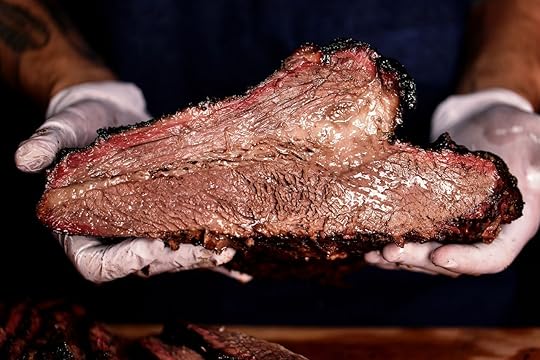
We hope you love the sproducts we recommend! Just so you know, Matador may collect a small commission from the links on this page if you decide to make a purchase.
Few types of cooking define American cuisine like Texas barbecue. Depending on where in the state you’re eating, it’s origins can be attributed to Mexican farmhands, emancipated enslaved people, and German immigrants. Yet no matter which style of Texas barbecue you’re talking about — barbacoa, sausage, brisket, or anything else — there’s no denying that it’s worth traveling to the state just for a taste.
Of course, can head down to Texas every time they’re craving pulled pork and brisket — unless of course you already live in Texas, in which case, lucky you. The rest of us have to recreate the smoky flavors of Texas barbecue at home. Gifting the barbecue enthusiast in your life with any of the tools of the trade makes mimicking the flavors a little easier. And as an added bonus, there’s a good chance you’ll get to benefit from the fruits of their labor when they use said tools.
From a hefty pair of tongs to a trusty meat thermometer and a flavorful rub, these Texas barbecue tools are exactly what anyone interested in cooking their own Texas barbecue feasts needs.
Spice rubTo bring the smoke and spice of Texas barbecue home, you need the right combination of seasonings. True, you can, and when possible should, make your own barbecue rub. In Texas, barbecue rubs combine the smoky spice of chili powder and cayenne pepper with the sweetness of brown sugar alongside classic flavor boosters like onion and garlic powder and black pepper. Ready made options, like this one from RubWise, can make life easier and ensure a perfect balance. It’s designed especially for brisket, a Texas speciality. Rub your uncooked brisket with this seasoning mixture, then marinate for ideally 24 hours.
Buy now: Texas Style Brisket BBQ Rub by RubWise, $15
Smoker
Photo: Weber/Facebook
Gas grills are a common sight in garages across America, but if you’re serious about barbecue specifically, you need a charcoal smoker. Charcoal is ideal for low and slow cooking, and gives more flavor than a gas grill. This smoker from Weber makes the perfect barbecue easy with a water pan to add steam for moist meats. Plus, it’s big enough to smoke a whole turkey.
Buy now: Weber Smokey Mountain Cooker, $349
Spatula and tongsA reliable set of spatula and tongs are essential to the pitmaster’s toolkit. An ideal pair of tongs are easy to grip and use, and hit the Goldilocks zone of long enough so you don’t burn your hands and short enough that you don’t lose control. And of course, you can’t properly flip a burger without a spatula.
This convenient set of barbecue tools includes all the necessary accessories in a case for easy organization. It also includes a sturdy grill cleaner, so that your work space stays clean after each use.
Buy now: Wood-Handled 9-Piece Barbecue Tool Set, $38
Sauce
Photo: Stubb’s/Facebook
In Texas, the meat tends to take center stage when it comes to barbecue, and most pitmasters rely less on a heavy sauce to compliment their creations than folks do in say, Kansas, where barbecue sauce is embraced more readily. In fact, in some regions you won’t see sauce used at all. Central Texas barbecue, for example, uses a simple rub of salt and black pepper and skips the sauce entirely. But that doesn’t mean you should rule out serving sauce on the side with your own version of Texas-style barbecue.
Texas-style barbecue sauce usually incorporates some combination of lemon juice, mustard, onion, garlic, Worcestershire sauce, ketchup, and brown sugar, among other ingredients. If you’re not confident enough in your cooking skills to make your own, legendary brand Stubb’s makes a variety pack that highlights both spicy and smoky Texas barbecue flavors.
Buy Now: Stubbs Texas BBQ Sauce Sampler, $25
Meat thermometerServing undercooked meat to your family or dinner party guests isn’t just dangerous — it’s also a sure sign that you haven’t mastered the grill or the smoker yet. Avoid the embarrassment of looking like a barbecue newbie by equipping yourself with a reliable meat thermometer. The Thermoworks Thermopop does the job without getting to complicated, and is fast and easy to read.
Buy now: Thermopop, $35
Cast iron skillet
Photo: Lodge/Facebook
A cast iron skillet isn’t redundant just because you’ve got a grill. This hardworking pan will elevate your grilling and barbecue game. Cooking meat like steak and burgers in a cast iron skillet on top of a hot grill imparts the perfect sear, and as an added bonus the meat cooks in all its juices and fat, capturing all that flavor rather than it going to waste as it drips through the grates on the grill. You can easily roast vegetables in it, too.
Buy Now: Lodge Pre-Seasoned Cast Iron Skillet 12 inch, $45
Wooden cutting boardAfter the barbecue is done cooking, it’s essential that you allow it to rest. If you cut into a slab of brisket for instance, all the juice will flood out, leaving the meat you worked so hard to prepare unpalatably dry. The meat should rest for at least 15 minutes, allowing the juices to redistribute in the meat. The result is a succulent and tender cut.
The best place to rest your cooked barbecue is on a classy wooden cutting board that’s big and sturdy enough for you to maneuver and carve up the meat. Inevitably, some juice will leak out of the meat, no matter how long you let it rest. The key to this cutting board is it’s “juice groove.” Wrapped around the perimeter of the cutting board this deep ridge catches juice, reducing messes and making clean up easier.
Buy now: Catskill Craftsmen 24 Inch Pro Series Reversible Cutting Board with Groove, $75

How Portugal could become one of the world’s largest countries

When you think of large countries, Portugal is far from top of the list. In fact, it lands at number 109 in terms of size. But if an ambitious plan works, the country will be able to call itself the 16th largest country in the world, and it won’t require a single war or invasion.
In a Youtube video, RealLifeLore explains Portugal’s fight for more land, which goes as far back as 600 years ago. The country was one of the first to become a colonial nation, and it also was one of the last to leave colonialism behind. Its first colony was founded in 1415 when the Portuguese overthrew the Moors to start its first colony, Cuerta, and then expanded to control the spice trade around the Indian Ocean as well as control territory in modern day Brazil, China, and parts of Africa.
Portugal’s control over parts of the world waxed and waned from 1755 to 1975, including a stint after World War II when Portugal called itself a “plural-continental nation” with “provinces” in several other countries. Post 1975, its territories were limited to islands, similar to other countries. Needless to say, it would take seismic shifts to regain what was once one of the biggest empires in history. Maritime laws may help Portugal out, however.
Using the country’s islands, Portugal will follow the United Nations rules on maritime laws to control resources in the ocean. The country already has control of the 20th largest ocean water territory thanks to ownership of 200 miles beyond the shores of Portugal proper, the island of Madeira, and its islands in the Azores. The law doesn’t allow countries to control who goes in or out of the water territory, but, any resources they find in the area — fish, gas, minerals, etc. — are all property of the Portuguese government. The country plans a bid to claim Portuguese waters even farther, creating a continuous water flow territory between its mainland and islands, granting the country exclusive rights to the gas and oil drilling they might find in the seafloor. And from that standpoint, Portugal would once again control a massive territory. 
What it’s like to go truffle hunting in Italy with Tuscany’s ‘Giulio the Truffle Hunter’

“You’re going to have to walk from here,” our cab driver said after her fifth attempt trying to turn up a steep, narrow driveway in the Tuscan countryside. We had just made the 25 minute journey from the center of Florence, Italy, to Bagno a Ripoli, a hilly, verdant comune a little more than four miles southeast of the city. As we stepped out of the cab and made our way up the driveway, Brunelleschi’s Duomo was still visible in the distance.
“Buongiorno e benvenuto!” we heard as we walked toward the farmhouse at the top of the small hill. There to greet us was Giulio Benuzzi, the man we came to see on that cool, sunny morning. Better known as Giulio the Truffle Hunter, we were meeting him for an excursion to find one of the most sought-after culinary delicacies in the world: Tuscany’s black truffles.
As we stepped into the farmhouse, his love for truffle hunting was clear. Artwork dedicated to the fungus, painted by Giulio himself, hangs on the walls. As he outstretched his hand to explain one of the works — a colorful, abstract piece depicting a man overlooking a tree with truffles at the end of its craggy roots — I noticed that even the large ring he wears is designed with an embedded truffle.

Photo: Max Schwartz
Giulio’s ardor for truffles goes back generations, and his grandfather brought him truffle hunting as a child. “I became a truffle hunter in 2003 and was one of the first to plan an experience like this,” Giulio said as we sat around a long wooden table.
While Giulio has been leading culinary excursions for decades, he recently partnered with Hotel Savoy Florence, a stylish property conveniently located in Piazza della Repubblica, to become the property’s exclusive “truffle concierge.” Guests can book the half-day experience directly through the hotel, which gives a taste of the Tuscan countryside without straying too far from the city center — a luxurious perk for anyone who’s interested in truffle hunting but also pressed for time.
It starts with a crash course on how truffles grow and the seasonal varieties.
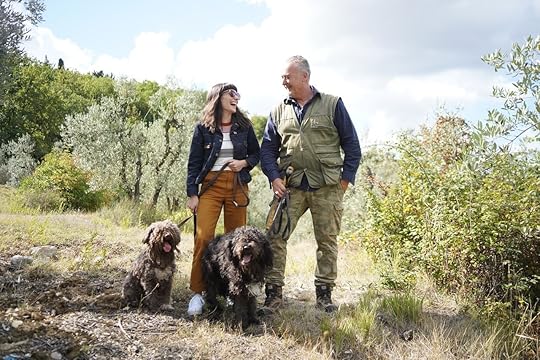
Photo: Max Schwartz
“I need to scout out about 150 to 200 hectares for each season, and it’s difficult to visit the same area more than twice in a season, which lasts two to three months,” he explained before heading out. Truffles grow underground in the shadow of trees, and they form a symbiotic relationship with the roots called mycorrhizae. Since they don’t grow in the same place every year, truffle hunters have to seek new trees every season.
When I visited Giulio in mid-September, black autumn truffle season had just begun. Nero pregiato (meaning “precious black”) truffles are typically found from September to the end of November, and sometimes they grow around the tree roots, taking on a curved shape. Giulio explained that the variety has a medium mushroom smell and are more rare than black summer truffles.
“The way you tell the difference between black truffles is the flesh,” Giulio said. “The darker the flesh, the better the quality. Black winter is black inside and it’s the best. Black autumn is mid-brown inside, and black summer is light brown inside.”
After our truffle 101 discussion, it was time for the main event. Giulio disappeared into the garden to fetch his two Lagotto Romagnolo dogs, Maga and Scott. Maga has been hunting truffles with Giulio for about four and a half years, and newbie Scott has been training for about one year. Curly and energetic, they greeted us exuberantly on the porch while Giulio laced up his shoes.

Photo: Max Schwartz
We secured the dogs in the back of Giulio’s SUV and took a short drive up the hill to begin our excursion.
“When truffle hunting, the dog does 70 percent of the work and the human does 30 percent,” he explained. “The human has to know where to go, or the dogs would never find [the truffles].” We stopped for a moment to snap photos of beautiful Florence in the distance before stepping into the woods. And then the hunt was on.
“A truffle spore grows in 24 to 48 hours, then needs about three months to mature,” Giulio said as he led Maga through the trees, with me and Scott following closely behind. “The dogs can only smell them when they are ripe because that’s when they release gas.”
A lot of people associate pigs with truffle hunting, but they’ve been banned in Italy since 1985 because they were tearing up the forest. Plus, dogs are easier to train, have more endurance, and are much easier to get in and out of your vehicle than a pig that weighs hundreds of pounds.
Suddenly, Maga veered off the path and started sniffing vigorously at the roots of a tree. “I think she found something,” Giulio said with excitement. “But we have to dig it up before she does because she’ll eat it.”
Giulio placed his foot over the spot and handed me his spade, a truffle hunting tool that’s designed with a metal, spade-shaped tip at the end of a wooden stick. He showed me how to carefully place the spade in the dirt at the right angle and push down on the handle to lift the truffle out of the earth.
“Two, oh my god!,” Giulio said as I lifted a duo of black autumn truffles from the forest floor. “Brava!” he said to Maga as she looked up at him proudly. Giulio inspected the truffles by pressing them lightly between his fingers and holding them close to his nose for a whiff. After deciding that one of the truffles was too old to use, he tossed it to Maga as a reward for a job well done.

Photo: Max Schwartz
Maga led us to one additional truffle before we retreated from the forest to enjoy lunch at Giulio’s. This special part of the Truffle Concierge experience started with Giulio pouring us glasses of sparkling wine while we snacked on pizza fritte (fried pizza dough), lonzino (a cured pork loin meat) his neighbor made, and an aged cheese speckled with Giulio’s truffles. That trio of antipasti was one of the most succulent and satisfying things we ate during our time in Italy — I mean it when I say I can’t stop thinking about it. We all chatted and Giulio sang while he prepared a buttery linguine. He poured one of his favorite red wines and served us hearty bowls of pasta, topped with copious amounts of shaved black autumn truffles.

Photo: Max Schwartz
As we ate, Giulio played a couple of songs from a truffle musical that he dreamt up, which is coming to life this November during a four-course dinner with live entertainment at Hotel Savoy’s restaurant, Irene. It’s clear after spending a few hours with him that he’s enthusiastic about truffles, but in his heart of hearts, he’s an entertainer.
We left our truffle hunting excursion full and satisfied with having found one of the most sought-after delicacies in the world—and completely joyful after hanging out with such a charismatic character who’s passionate about teaching the truffle way.
Visit Hotel Savoy for more information on Giulio the Truffle Hunter and the Truffle Concierge experience.

16 of the best hotels in Hong Kong

Hong Kong, an ultra-modern city jammed with skyscrapers, shopping, dining opportunities, museums, parks and some of the best hotels in the world, is a destination rich in history and Asian culture. Whether you are seeking an ultra-modern skyscraper, an amazing view, or a unique setting for your stay, you will find the perfect option in Hong Kong. While many of the well-known chain hotels are available, trying one of these more unique hotels is a better option for an authentic Hong Kong experience. Here are some of the best hotels in Hong Kong with options on the mainland and Hong Kong Island.
We hope you love the spaces and stays we recommend! Just so you know, Matador may collect a small commission from the links on this page if you decide to book a stay. Listed prices are accurate as of the time of publication. See our full Advertiser Disclosure here.
The best hotels in Hong Kong: The mainlandThe best hotels in Hong Kong: Hong Kong IslandThe best hotels in Hong Kong: Unique hotelsThe best hotels in Hong Kong: The mainland1. Nina Hotel Kowloon East
Photo: Nina Hotel Kowloon East/Facebook

Photo: Nina Hotel Kowloon East/Facebook

Photo: Nina Hotel Kowloon East/Facebook

Photo: Nina Hotel Kowloon East/Facebook
Set in the Kowloon district of Kwun Tong near the urban waterfront park, Nina Hotel Kowloon East offers amazing bay views, spacious rooms, a rooftop pool, and an award-winning restaurant. The renovated facility features the work of local artists in rooms and public spaces.
The Kwun Tong Promenade is an excellent place to stroll along the waterfront, settle on a bench to read a book or watch people, or to access the nearby malls of APM Shopping Mall and MegaBox Shopping Mall. You will find plenty of dining options from budget to luxury including Chinese, Indian, Italian, and American. The center of Hong Kong is five kilometers away and easily accessible by bus, taxi, or car. The KaiTak Cruise Terminal is a 35-minute walk along safe streets.
Price: From $79 per night
2. The Langham Hong Kong
Photo: Langham Hong Kong

Photo: Langham Hong Kong

Photo: Langham Hong Kong

Photo: Langham Hong Kong
Near Harbor City Shopping Center and the MTR Tsim Sha Tsui tube station, this hotel is perfect when you want to be near everything in Hong Kong. The hotel overlooks a lush courtyard and is a 10-minute walk from the Garden of Stars. The Tsim Sha Tsui Promenade features multiple a la carte restaurants serving mostly Asian cuisine. The Cke Shopping Mall is just meters from the hotel and offers a plethora of shopping opportunities.
The hotel has over 400 rooms, including 27 private suites. Each room has all the modern conveniences but with a timeless elegance. A rooftop pool, spa and wellness center, and a fully-equipped fitness center allow the guest plenty of opportunities to relax. There is also a comfortable and private bar and lounge on-site for a relaxing evening.
Price: From $136 per night
3. Mira Moon
Photo: Mira Moon

Photo: Mira Moon

Photo: Mira Moon
Named one of the best boutique hotels in Hong Kong in 2021, the Mira Moon is located near Wan Chai. The interior design is comfortable and modern, reminiscent of the Chinese Mid-Autumn Festival mythology. The 90 one-of-a-kind rooms, fitness facilities, full-service restaurant, and experienced staff will ensure your stay is memorable.
The hotel is just a short drive from the Hong Kong Convention and Exhibition Center. Just a short walk away is the Garden of Stars and Times Square. Adjacent to the hotel is the Hysan Place Mall offering shopping and restaurants for your stay.
Price: From $356 per night
4. Mandarin Oriental Hong Kong
Photo: Mandarin Oriental Hong Kong/Facebook

Photo: Mandarin Oriental Hong Kong/Facebook

Photo: Mandarin Oriental Hong Kong/Facebook

Photo: Mandarin Oriental Hong Kong/Facebook
The city center hotel provides modern luxury, comfortable rooms, and stylish décor with incredible views of the city or bay. The hotel features a full-service spa including steam baths, an indoor swimming pool, a fitness center, and an onsite restaurant and bar.
Star Street and Landmark are both a short walk from this hotel offering multiple dining options including Asian, Italian, and American options. It is just a short drive from the Man Mo Temple. Ocean Park is five kilometers away but the scenic Hong Kong Park is less than one kilometer away.
Price: From $432 per night
5. Hotel Cozi Oasis
Photo: Hotel Cozi Oasis

Photo: Hotel Cozi Oasis

Photo: Hotel Cozi Oasis
In the Kwai Chung area of Kwai Tsing, this hotel is perfect for relaxing in an area surrounded by nature. The rooms are spacious and modern with complimentary high-speed Internet access. The staff work to ensure you have everything you need in your room.
Within walking distance are the Ma On Shan Country Park and Hong Kong Wetland Park, both known for their natural beauty reflecting the native culture.
Also nearby are the Hong Kong Space Museum and Hong Kong Science Museum, both definitely worth visiting. The Hong Kong Observation Wheel, Victoria Harbor, Flower Market, Tsing Ma Bridge, Ladies’ Market, and the Hong Kong Zoo and Botanical Gardens are all within five to six kilometers.
Price: From $62 per night
6. Hotel Madera Hong Kong
Photo: Hotel Madera Hong Kong

Photo: Hotel Madera Hong Kong

Photo: Hotel Madera Hong Kong

Photo: Hotel Madera Hong Kong
The name “Madera” is “wood” in Spanish. The hotel designers drew inspiration from nature in creating this urban oasis in the middle of the city. You will find wood paneling, sculptures, and even carved furnishings throughout the hotel, including the guestrooms.
The Jordan area is famous for its small shops, nighttime markets, and food kiosks with wafting, appetite-awakening scents of delicious foods, everything the Kowloon Peninsula is known for. Stroll through the Temple Street Night Market and visit vendor stalls that are portals into hidden backstreet shopping.
If you want to learn more about the rich cultural heritage of Hong Kong, the nearby Hong Kong Museum of History will tell you everything you want to know. The artifacts fill a 7,000-meter space. Not into history? That’s okay too. Knutsford Terrace is about a 10-minute walk, or the Miramar Shopping Centre is about an eight-minute walk.
Price: From $240 per night
7. Cordis Hong Kong
Photo: Cordis Hong Kong

Photo: Cordis Hong Kong

Photo: Cordis Hong Kong

Photo: Cordis Hong Kong
Located in the Yau Tsim Mong District near MTR station and adjacent to the Langham Place Mall, this luxury hotel is conveniently located near the lively and famous Ladies’ Market and Flower Market. Every room includes a comfortable bed and modern decor, floor-to-ceiling windows, blackout drapes, and networking connections.
Within five miles you will find the International Commerce Center, Victoria Harbor, the Tsim Sha Tsui Star Ferry Pier, Lan Kwai Fong, the Peak Tram, and Ocean Park. There are a variety of trendy restaurants around all of these sites to satisfy any appetite.
Price: From $138 per night
8. Hotel ICON
Photo: Hotel ICON

Photo: Hotel ICON

Photo: Hotel ICON

Photo: Hotel ICON
The Hotel ICON features ultra-modern styling and “beds so comfortable you’ll never want to leave.” The Tsim Sha Tsui and southern Kowloon areas are a shopper’s paradise. The Hotel ICON is along Nathan Road also known as “the Golden Mile.” Nearby you will find an eclectic and colorful mix of jewelry, electronics, international name brand stores, Asian label boutiques and many ethnic restaurants. The Miramar Shopping Center is along this road as well.
Want a break from the hustle and bustle of Nathan Road, wander over to the Tsim Sha Tsui Promenade. Here you’ll find the Hong Kong Cultural Center and Hong Kong Space and Science Museums and incredible views of the Hong Kong skyline surrounding Victoria Harbor.
Price: From $153 per night
9. Tung Nam Lou Art Hotel
Photo: Tung Nam Lou Art Hotel/Facebook

Photo: Tung Nam Lou Art Hotel/Facebook

Photo: Tung Nam Lou Art Hotel/Facebook

Photo: Tung Nam Lou Art Hotel/Facebook
Artistic creativity touches every room of this hotel. Each room has a different artistic theme — music, reading, natural elements, or the tea elements of the Asian culture.
Situated on the northwest border of Hong Kong in Mong Kok and the Yau Tsim Mong District, the area is known for dynamic shopping opportunities. Entire streets are devoted to specialty markets like fish, flowers, and jade. The area is also ideal for art lovers, with multiple galleries and artisans with their crafts on display.
If you are in search of great bargains, head to Fa Yuen Street for some of the best couture items, exotic fruits and fruit juices, and Takoyaki (fried balls of octopus). The Grand Century Place and Knutsford Terrace are also about a 20-minute walk away.
Price: From $82 per night
The best hotels on Hong Kong Island10. The Fleming Hotel
Photo: The Fleming Hotel/Facebook

Photo: The Fleming Hotel/Facebook

Photo: The Fleming Hotel/Facebook

Photo: The Fleming Hotel/Facebook
Wan Chai on the northern shore of Hong Kong Island and one of Hong Kong’s oldest and busiest districts is well-known for its legendary nightlife and architecture reminiscent of the maritime history of Hong Kong. The hotel features maritime styling throughout from the elevators to the guest rooms including comfortable and modern amenities in each room.
The hotel restaurant, Osteria Marzia, is an excellent Italian cuisine option for dining. But you will also find a treasure trove of restaurants along Tai Yuen Street along with a huge selection of toy shops for kids of all ages. Here you will find everything from the old classics to the latest collectibles.
If you are an early riser, check out the morning flag-raising ceremony at Golden Bauhinia Square. The Hong Kong Academy of Performing Arts is just a 10-minute walk away and features incredible performances throughout the year. Techy people will not want to miss the Wan Chai Computer Center on Hennessy Road with a large display of all things digital and electronic. Victoria Harbor is a short eight-minute walk away while Lan Kwai Fong is about 30 minutes away. Hysan Place is about 15 minutes away.
Price: From $97 per night
11. Tuve
Photo: Tuve/Facebook

Photo: Tuve/Facebook

Photo: Tuve/Facebook
Located in the heart of Tin Hau along Causeway Bay, this hotel has some serious 007 vibes starting the moment you enter the facility. While you might feel like you are entering a secret mission, the atmosphere was inspired by photographer Kim Holtermand’s Lake Tuve, Sweden series. The premium rooms balance a minimalist decor with modern comfort with translucent glass panels for natural lighting.
The central location is excellent for high fashion boutiques, bustling local markets, multiple restaurants, and accessing Victoria Peak. But, despite being in the middle of all this activity, inside the hotel is extremely peaceful. The onsite restaurant, The Sliver Room, features Italian-Japanese fusion cuisine. Try the octopus with homemade aioli, the fresh fish of the day with their cucumber sauce, or their pappardelle wagyu beef cheek.
Nearby attractions include Lan Kwai Fong and Soho, Ocean Park, Repulse Bay. Hong Kong Disneyland is 17 miles away.
Price: From $107 per night
12. One96
Photo: One 96/Facebook

Photo: One 96/Facebook
One 96 in the Sheng Wan district is unique for its full-floor suites which feel more like an apartment than a hotel room. Sheng Wan is a growing hipster destination offering a diverse array of dining options, trendy coffee shops, and unique bars and lounges.
In addition to the multiple bars and restaurants, nearby attractions include Victoria Harbor, Lan Kwai Fong, Hollywood Road, and Man Mo Temple. You are about one mile from Hong Kong Park with its lush greenery and tranquil paths. You are about two miles from 1881 Heritage and the Hong Kong Convention and Exhibition Center.
Price: From $327 per night
13. Hotel Pennington
Photo: Hotel Pennington

Photo: Hotel Pennington
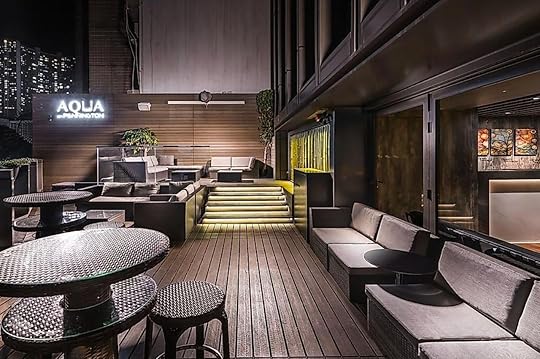
Photo: Hotel Pennington
The comfortable and all non-smoking rooms at Hotel Pennington include soundproof windows to block out unwelcome noises. Luxurious linens, feather pillows and down pillows ensure you have a good night’s rest.
Nearby are an array of restaurant options including Asian, Japanese, Korean, Italian, and American cuisine as well as several coffee shops and bars.
The Hang Lung Center (shopping mall) is a short seven-minute walk. You definitely want to visit the Forever Blooming Bauhinia Sculpture which is only 1.5 kilometers away. The Hong Kong Science Museum is a short five-minute drive as is the Garden of Stars.
Price: From $327 per night
14. Gloucester Hotel Luk Kwok
Photo: Gloucester Hotel Luk Kwok

Photo: Gloucester Hotel Luk Kwok
With a stay at Gloucester, you will be minutes from everything you want to do in Hong Kong. The hotel features comfortable and spacious rooms with in-room safe boxes. The staff know the area and can help make any arrangements you might need during your stay.
Wan Chai is the shopping mecca of Hong Kong with multiple clothing, electronics, toys, and jewelry stores. The area also offers an array of restaurants and street food options along Victoria Harbor and the Central Plaza.
The Hung Shing Temple and the Hong Kong Academy for Performing Arts are a six-minute walk away. Sogo is about 15 minutes away.
Price: From $199 per night
The best unique hotels in Hong Kong15. Glamping by the Big Buddha
Photo: Booking.com

Photo: Booking.com
Turn your day trip into an overnight adventure in one of the Ngong Ping SG Davis Youth Hostel glamping tents. This site is located on Lantau Island. The Tian Tan Big Buddha is one of the top attractions in Hong Kong. There are limited dining options here so you will want to plan ahead. But, there is a communal kitchen and BBQ pits. After dinner, stroll to the Big Buddha for a view few get to experience, the illuminated night view of the Buddha.
Price: From $35 per night
16. The Helena May
Photo: Helena May

Photo: Helena May
This unique option is for women and girls only and features single and shared accommodations in one of Hong Kong’s heritage buildings on the mainland.
The architectural design makes the building stand out from the modern line of most Hong Kong buildings. The site was originally established as a club for women and girls in 1916. High tea and scones are still served daily in the dining room. There is also a century-old library collection. The Helena May is feet away from the Peak Tram and an easy walk to other MTR stations making it easy to move around to other locations in Hong Kong. 
Price: From $80 per night
More like thisWhere to StayThe best boutique hotels in Reykjavik for a stylish stayTravel gear by Black-owned companies
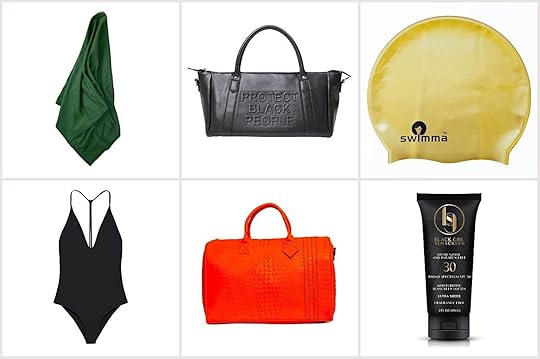
While every year seems to bring new Kickstarter campaigns for innovative travel gear, we rarely get to see products designed, created, made, or sold by Black-owned companies. Even though Black travel is a multibillion-dollar industry, we’re still not finding a huge range of travel accessories tailored specifically to this market.
One of the biggest reasons why is access to investors and venture capital. Only one percent of venture-capital-funded startups have a Black founder. Still, some Black-owned companies are flourishing through advertising, direct support from consumers, and by making some of the best travel gear out there.
If you need to update your own travel gear or you’re looking for a holiday gift and want to support Black-owned companies, here are a few suggestions of where to start.
We hope you love the products we recommend from Black-owned companies! Just so you know, Matador may collect a small commission from the links on this page if you decide to purchase. Listed prices are accurate as of the time of publication. See our full Advertiser Disclosure here.
Travel luggageTravel clothingTravel accessoriesTravel beauty essentialsTravel luggage 1. Tote & Carry for travel totes
Photo: Tote & Carry
Tony “Stitch Doctor” Dennis is the co-founder of Tote & Carry and an Atlantian by way of Buffalo, New York. He designed his line of affordable luxury travel totes with one idea in mind: “travel with luxury.” Tote & Carry’s designs are made to be eye-catching and tailored in classic lines, and they come in colors as conservative or as bold as you prefer.
Dennis began his career in fashion design in his basement, where he assembled his first handful of pieces on an old sewing machine. From there, he progressed through the ranks, slowly expanding his business until he secured himself as a premier stylist and designer for magazines, TV shows, athletes, and stars.
Tote & Carry makes many bags and totes, but the signature travel set, the Apollo I, is at the core of the brand. Comprised of a small, under-seat backpack and a carry-on tote — both crafted in eco-friendly, snakeskin-embossed leather — these pieces are made for you to carry around the world for a lifetime.
Price: From $158
2. CISE for vegan leather duffle bag
Photo: CISE
A Los Angeles-based brand CISE, uses its luxury bags and other apparel to convey its strong brand message. Their “Protect Black People” duffel will spread a powerful message wherever your travels take you. CISE also has a community-based focus, giving back by donating to the Anti-Racism Fund.
Price: $185
3. Ebby Rane for luggage
Photo: Ebby Rane
Ebby Rane’s tagline, “never check a bag again,” stands true. Their rolling luggage cases come with multiple pieces to help you organize and maximize space in your carry-on. The Q2 Aviation Gray comes with seven pieces — a laundry bag, shoe bag, essentials pouch, two packing cubes, a luggage tag, and even a suitcase valet for once you reach your destination. If you want to go big, order The Quartermaster, which comes with 12 pieces, including a bag just for underwear, a vanity, and a clutch purse.
Price: From $495
Travel clothing 4. JADE Swim for swimwear
Photo: JADE Swim
Brittany Kozerski, the former fashion market editor at Marie Claire, JADE Swim because she was having trouble finding the perfect swimsuit. Today, her swimsuits might just be your new favorite go-to suit to toss in a carry-on. Designed to act as both a swim and bodysuit and more than just loungewear, they perform just as well in the pool as they do at dinner.
JADE Swim utilizes fabrics that are meant to keep their shape wet or dry, so you never have to worry about wrinkling or bunching. They are made with sustainable fabrics in Los Angeles to exacting standards — and they’re built to last. These pieces are made to be much more than just a simple swimsuit and could become a staple in your resort wardrobe.
Price: From $105
5. Baxter Wood Company for raincoats
Photo: Baxter Wood Company
Baxter Wood Company is redesigning classic rainy gear with a stylish twist that’s also good for the planet. Kweku Larbi and Sarah Smith founded Baxter Wood Company in 2018 after seeing the amount of plastic that was left unregulated on their trip to Ghana. Their travel essential raincoat is a classic yet modern fishermen’s coat made from 22 plastic bottles and is meant to last. It comes in both men’s and women’s sizes. And when it’s finally time to retire the cherished garment, you can recycle the coat by giving it back to Baxter Wood Company, and you’ll receive a $30 in-store credit.
Price: $140
6. Haute Box for styling service and a personalized box of clothes
Photo: Haute Box
One of the most daunting tasks about traveling is knowing what to pack, especially when you know you’ll need a new outfit for the perfect Instagram photo! Haute Box takes all the legwork out of packing and does the shopping for you.
Haute Box offers a personal styling service that will give you a brand-new look without ever having to shop for yourself. All you need to do is pick a size for your box, each of which has a point value, and fill out a survey covering sizes, fit, personal style, and the occasion. A stylist will then choose items based on your needs. If you don’t like surprises, the Haute Box Unlimited service is a styling session that will come with curated looks you can purchase on your own. And there’s also the Haute Box Boutique for items like sunglasses and dresses that are sold in-house.
Price: From $100
Travel accessories 7. Ashya for passport holders and other travel accessories
Photo: Ashya
Co-founders Ashley Cimone and Moya Annece created Ashya, which makes products at the confluence of utility and luxury. Several expertly crafted, unisex travel accessories round out the brand. In the company’s philosophy statement, the brand states that its hope is for each piece to help and inspire you to “move more thoughtfully and fluidly throughout the world.”
Sustainability and ethics are at the center of the Ashya line. All of the products are manufactured and assembled in New York City. Ashya is committed to using only responsibly sourced materials, reducing manufacturing waste, and assuring that everyone involved in creating these works is treated well and compensated fairly.
Though all of the pieces are straight-up envy-inducing, the passport bolo might be the most luxurious. Trimmed in hand-tooled, 14-karat gold plated hardware, this bolo can hold your passport, a couple of cards, a bit of cash, and a boarding pass or two. If you’re not sold on wearing it around your neck, you can style it as a skinny belt to wear it around your waist.
Price: From $225
8. Breezy Tee for travel hair towels
Photo: Breezy Tee
If you’re fed up with scratchy hotel towels that seem designed to destroy the natural pattern of your curls, kinks, and coils, you may want to invest in the super packable, jersey-knit Breezy Tee. These are small enough for even the most minimalistic traveler, they dry quickly, and they can protect your hair from frizz and damage.
The line was created by Brie Moore after her own “big chop” and a new commitment to maintaining her own hair, according to the company bio. Finding strategies and products that worked well with her newly natural tresses was a challenging adjustment after years of chemical relaxing. The rough terry cloth typically used in towels caused her hair to frizz, break, and dry out. Instead, she used jersey cotton fabric.
Though their best-known product is the jersey knit towel, there are several other curl protection products in the line. You may also want to pack one of their satin-lined beanies or silk scrunchies to round out your arsenal.
Price: From $27.50
9. Swimma for swim caps
Photo: Swimma
Nomvuyo Treffers told Shoppe Black that she created Swimma so that folks like herself and her daughters could finally have a swim cap that envelops their voluminous hair.
“It is vital that we do not let our children grow up feeling that their hair is a problem because a swim cap is too small,” she told Shoppe Black.
These swim caps come in sizes suited for toddlers, kids, and adults, as well as different capacities to encompass different hairstyles. For folks with locs, braids, afros, and weaves, this product can be a revelation, as traditional swim caps simply aren’t made to fit over such styles. But you may also want to consider them if you’re prone to wearing rollers or a protective style, too.
Price: From $13.95
10. NiLu for travel tea infusers and other accessories
Photo: NiLu
Based in Harlem, NY, NiLu is a Black-owned gift shop that’s all about creating high-quality, unique accessories that make the perfect gifts for your family and friends. The majority of products sold are by Black, Indigenous, and other people of color.
Every traveler needs a reusable water bottle, but if you prefer a decent cup of tea, this travel tea infuser lets you brew leaves on the go. With this bottle, you’ll get high-quality, freshly-made tea in a double insulated bottle that will keep hot tea hot and cold tea cold, making it perfect for wherever your travels take you. Pair your new bottle with loose-leaf tea leaves from Harlem resident and NiLu’s featured tea sommelier Laura Cepeda. Her line, Modestine tea, sells flavors like “Don’t Stress Me,” made from organic honeybush, lemongrass, lemon myrtle, and citrus to help support the immune system.
Price: From $32
11. Mind the Cork for cardholders
Photo: Mind the Cork
When people purchase vegan leather as an alternative that’s better for the environment, what they don’t realize is that most vegan leather on the market is not actually sustainable. Jenny Espirito Santo, founder of Mind The Cork, is part of the movement creating products that are genuinely sustainable by using the renewable resource, cork.
These slim cardholders are durable, come in 17 different colors, and can hold both cards and paper money. But be quick to order! Because Mind The Cork is built with sustainability in mind, products are ordered in small batches to avoid waste, so it might be a while before your favorite color comes back in stock.
Price: $21
Travel beauty essentials 12. Black Travel Box for TSA-friendly beauty basics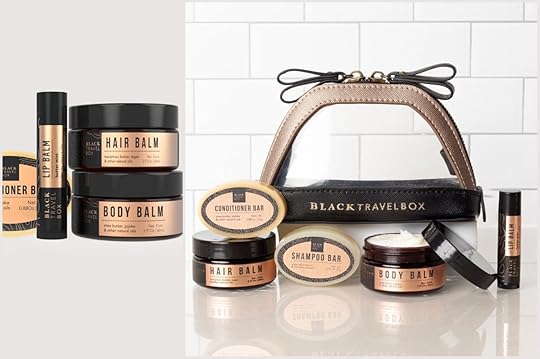
Photo: Black Travel Box
If you’ve ever browsed the travel and trial size section at a pharmacy, you’ve likely noticed a lack of products tailored to Black hair and skin. This is the gap in the market that Black Travel Box seeks to fill with its Carry On Starter Box, which is a collection of mini-sized, TSA-friendly beauty basics tailor-made for melanin-rich hair and skin.
Founder Orion Brown started Black Travel Box after not being able to find products that suit the specific requirements of her hair and skin while traveling. Instead of trying yet another internet-sourced “travel hack” or attempting to sneak full-sized products past the TSA, she created the Black Travel Box to help travelers of color.
Whether you’re traveling down the road or around the world, this is a super easy, convenient way to have access to elegant personal care no matter where you end up.
Price: From $35
13. Black Girl Sunscreen for sunscreen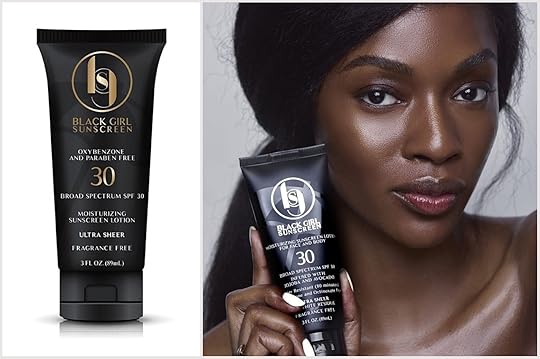
Photo: Black Girl Sunscreen
For us melanated folks, finding a sunscreen that delivers excellent protection without leaving a lavender-hued whitish film on our bodies can feel downright impossible. And for many of us, our skin is too sensitive to handle some of the harsh chemicals that sunscreen can contain. Enter Shontay Lundy’s Black Girl Sunscreen.
Lundy created Black Girl Sunscreen in part to educate Black and brown folks about the need to wear sunscreen. “Normally, Black people don’t wear sunscreen because we weren’t taught to do so,” she told Business Insider. By designing a product that eliminates many of the complaints that people of color commonly have with traditional sunscreens, she’s hoping to both tap into an underutilized market and educate people on how to care for their skin.
With two products currently in the line, the flagship SPF 30 formula and a new SPF 50 version for kids, Lundy has garnered lots of excellent press, a multi-million-dollar valuation on the company, and thousands of five-star reviews from thankful and satisfied customers. Though it began as an online-only endeavor, you can now find Lundy’s products at Amazon.
If you are looking for more wellness products, check out our list of the best beauty products for Black travelers.
Price: From $18.99
More like thisWellnessThe 10 best beauty products for Black women travelersNovember 2, 2021
6 photographer-approved tips to take perfect underwater pictures

An underwater photograph is the perfect memento from any trip where water is the main attraction. Yet the barrier to entry for underwater photography is much higher than it is for snapping a picture on dry land. That’s one reason why the most stunning underwater photographs can be so eye-catching.
For help on getting the perfect submerged shot, I turned to professional photographers and the global Professional Association of Diving Instructors (PADI), which also has an underwater photographer course for $125.
Grab your water-ready camera (whether that be the a GoPro that can handle up to 33 feet of submersion, a waterproof point-and-shoot, or specialty equipment) and follow these tips to get started on nailing the perfect underwater shot on your next vacation.
1. Get close“There are a lot of beginner mistakes, but a common one is trying to take pictures from too far away,” says Karl Shreeves, co-author of the PADI’s underwater photography course and the company’s principal photographer for educational materials. “The less water light passes through the better the picture, generally speaking, so closer is usually better.”
2. Avoid a shallow depth of fieldAbove-ground photos often benefit from a tight selective focus and a shallow depth of field. This allows for a crisp subject up front with a blurred background. Getting a clear underwater photo with a shallow depth of field, however, is a different story.
“The number one mistake I’ve made in the past is using a shallow depth of field,” says Robb Leahy, a photographer who recently worked on the Reef Restoration Project on the Dutch Caribbean island of Bonaire. “A shallow depth of field makes a photo interesting but it can be challenging underwater to nail your focus. I have found the best way to keep images sharp is by setting the aperture around 5.6 to 7.1.”
3. Mind the white balance settingA camera’s underwater mode (if there’s one available) is an easy go-to for crystal clear bright water. That checks the box for your tropical coral gardens or kelp forests in the middle of the day.
Even if you’re more the type who puts the settings to auto and moves on, you may still want to keep an eye on one setting in particular: the white balance. This is how the camera ensures white looks, well, white. That’s not terribly hard to do out of water because the colors are relatively steady. Underwater is a different story.

Photo: PADI
“Because water absorbs color, a change of depth or distance affects the white balance,” Shreeves says. “Adding to this, we don’t usually want to be perfect with white balance (it needs to look like you’re underwater, right?). So, more advanced underwater shooters often adjust color primarily afterward with software – but that only works if the camera’s underwater setting was reasonable.”
This is especially important to pay attention to at certain depths and if you’re shooting colorful subjects.
“The color red disappears at a depth of 30 feet, and orange at around 50 feet,” Leahy says. “Auto-white balance is less forgiving underwater and can mess up your colors, especially skin tones.”
On a clear day, Leahy will shoot on aperture priority mode at 5.6, with a high speed shutter burst, center auto-focus, an ISO set between 800 and 1,600, and the white balance set to 5200K.
4. Choose a wide-angle lensShreeves usually works with such a wide angle that he has to be careful his feet aren’t in the photo. A long lens may be needed for super shy creatures that’ll dart away if they spot you, but long lenses typically don’t have an application for your average underwater shots.
“Other than for closeup work or fish portraits, the widest-angle lens you can get is best,” Shreeves says. “The reason is that it lets you get close while ‘pushing’ the picture away optically, so you see everything with less water between the subject and camera.”

Photo: PADI
And remember, you can always crop the photo later.
“A wide angle lens is more forgiving and images can be cropped to better composition in post,” Leahy, who suggests a 15-25mm lens, says. “I’ve never used anything longer than 50mm because it’s hard to keep the subject in frame from a far distance.”
5. Know the light limitations of the environmentNatural light can be much more difficult to work with than when you’re above the surface. Shreeves has three basic principles to underwater natural light photography: “Shoot in clear, well-lit water; stay shallow; and stay close.”
“Clear water is always the best, period,” Shreeves says. “And murky water is always the worst, period. Beginners can readily get great shots within the limits of even modest, underwater snapshooting photo gear in clear water. In murky water, only skilled shooters get useable shots, and they have to have the right equipment, lighting and skill, plus make adjustments later in Photoshop.”
6. Be patient, but also aware of timingA picture is a moment in time, and often the best pictures are made when the photographer patiently waits for the exact moment that can tell a story or depict something many people miss in the day to day. Timing it a little harder underwater.
Like all wildlife photography, it’s all about good luck and patience,” Leahy says. “But when you’re underwater, your time is limited to the amount of air you have. Holding a position can be quite challenging or impossible when there’s a strong current so I would recommend having your settings dialed in.”
Matador Network's Blog
- Matador Network's profile
- 6 followers



